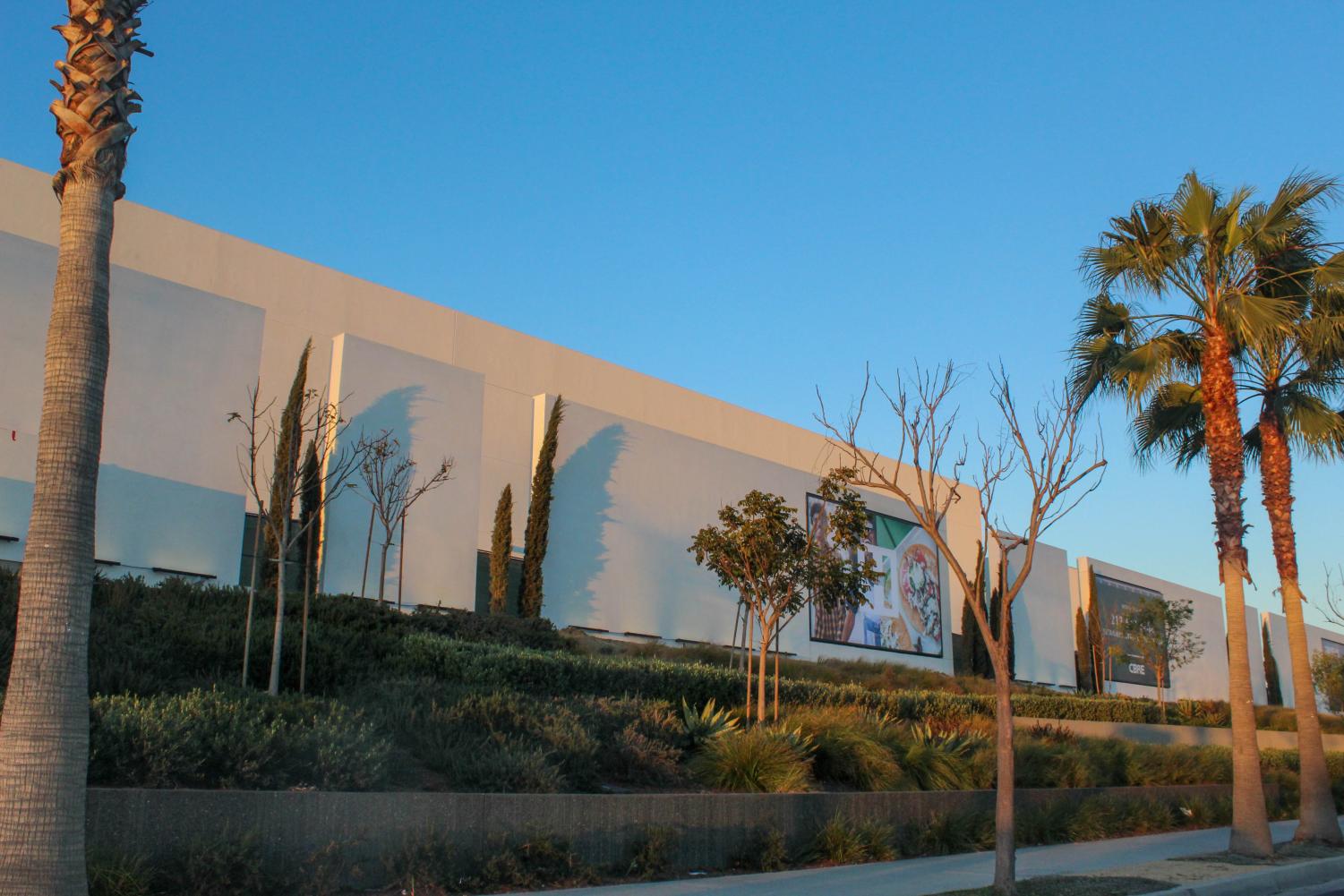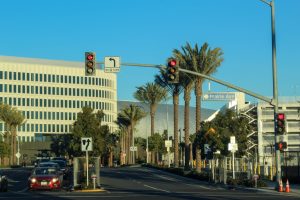Op-Ed: Inglewood is changing
Photo credit: Lizette Gonzalez
As I drive around my neighborhood, I now pass by the SoFi Stadium on the daily. Despite the huge fences surrounding our so-called new treasure, its presence has changed my lifestyle.
March 2, 2022
Last December, my mom and I went to see our all-time favorite musician, Christian Nodal, live in concert. Whenever we went to concerts, our destination was typically the newly called Crypto.com Arena or a venue in Hollywood. Now, it’s the Forum or the brand-new YouTube Theater — both a 1o-minute walk from our home.
Before the concert at the Youtube Theater, my mom and I wandered the new 298 acres space that is composed of the Forum, the SoFi Stadium and the Hollywood Park Casino. As I walked around, I easily got lost. These acres of land felt different. Even the Target across the street, which was still visible from the theater, felt distant. It didn’t matter anymore how familiarized I was with this area. Everything feels different. I quickly forgot I was still in Inglewood.
Little did I know that there was a term for what I was noticing. Little did I know that my Inglewood was no longer the one I grew up with. This is gentrification at its finest.
The New York Times recently published an in-depth feature surrounding Inglewood’s residents’ feelings about having the Super Bowl in their neighborhood. They interviewed small business owners, Inglewood’s mayor and longtime residents, but the emotions that educator Jennifer Tyler shared resonated with me the most.
Tyler told The New York Times she felt torn with seeing new businesses and buildings emerge in Inglewood. She said, “It’s great that we have all this stuff now in our neighborhood, but it makes me mad that we couldn’t have it anyway without the specter of gentrification.”
I couldn’t have said it better myself.
Yes, there was economic growth for Inglewood’s small businesses, especially on the day of the Super Bowl. But, at what cost?
At the cost of Inglewood’s Black and Latino population.
Let’s talk about some of the things I’ve been noticing. To begin with, the increased traffic is ridiculous. Yes, Los Angeles is infamous for its traffic, but it takes me twice as long to go home due to numerous concerts and sporting events. Before the SoFi Stadium, this wasn’t the norm in Inglewood.
I come home to discover a swarm of people walking in front of my house after parking their car on my street to escape the absurdly priced parking at the stadium. On a regular basis, I see faces I don’t recognize invade Inglewood. I don’t blame them; after all, they’re just trying to have a good time, but those who live here are changing our lifestyles for their sake.
I assure you, with average ticket prices of $6,000, Inglewood’s low-income residents weren’t the ones attending the Super Bowl.
Additionally, there’s a stronger police presence now. Since Inglewood is made up of mostly Black and Latino people, seeing police at every corner is emerging the sentiment of alarm — they’re accomplishing the opposite of their purpose. Law enforcement’s history of racial profiling and police brutality towards people of color have overshadowed their purpose.
I’m not suggesting that there should be no security; after all, it’s to be expected given the influx of people, but I still feel unsafe. The amount of people I see come into my neighborhood is unsettling. The amount of police cars and federal agents make me feel on edge because it now feels like Inglewood is a ticking bomb that is about to explode.
This sentiment stemmed from coming across a post on social media that showed the U.S. Immigration and Customs Enforcement patrolling around a street I pass by every day. On Super Bowl Sunday, I saw federal agents in front of the supermarket I go to.
Following a public uproar, the Department of Homeland Security issued a news release underlining the presence of numerous federal agencies in Inglewood, including I.C.E., to prevent human trafficking and the sale of counterfeit items. Don’t get me wrong, I understand, but as a member of the Latino community, I can’t forget the brutal and inhumane treatment that undocumented immigrants have received from U.S. immigration agents. For us, their presence is synonymous with fear. It’s frustrating to feel uneasy and disturbed in a town I call my home.
In addition, before Super Bowl Sunday, Los Angeles County officials conducted a large homeless clean-up along the perimeter of the SoFi Stadium. Why did this make people furious? Because a million eyes would be watching us for the year’s largest sporting event. The city was more concerned with beautifying Inglewood than Inglewood’s unhoused community. City officials made their point clear: Inglewood’s unhoused residents would make them look bad and damage their reputation. Where was their so-called “help” before everyone else was watching?
As if SoFi Stadium wasn’t enough, the NBA Clippers are constructing a new $2 billion stadium across the street from the SoFi Stadium. By 2024, another sports team will be playing in my neighborhood.
When can people in Inglewood get affordable housing? Where are the services that Inglewood’s undocumented, homeless and at-risk residents need? We don’t need any more stadiums. We need action that will benefit my community, and is actually intended for us.
I’m not suggesting that you skip these concerts or sporting events. This is a systemic issue; it’s one we’ve continuously seen in communities like mine. I love music and sports and when I have been able to, I have even visited this new space. But, it’s different now. It’s different when it’s in my backyard and when it has caused my town to change drastically. It’s impossible not to root for your favorite football team or attend a concert by your favorite musician, I know. Regardless, I urge you to think about the community you’re visiting.
Inglewood may be the town you go to have a fun time one evening, but Inglewood is my home.

















